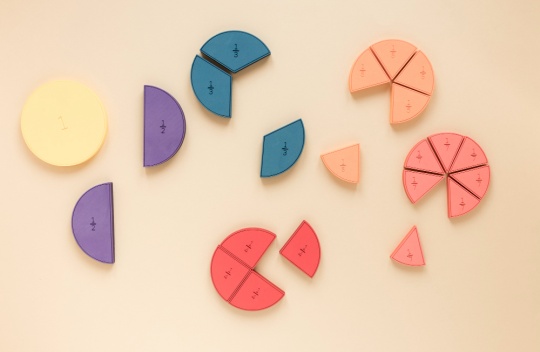Body Fat Calculator
When embarking on a fitness journey, many people focus solely on weight. However, understanding your body fat percentage can provide a more comprehensive picture of your health and fitness. A body fat calculator is an important tool that offers insights beyond what weight alone can reveal, allowing you to tailor your fitness and nutrition plans more effectively for optimal health outcomes.
Body Fat and Its Impact on Health
Body fat is an essential component of our body composition, serving several crucial functions. While often vilified in fitness circles, body fat plays vital roles in temperature regulation, hormone production, vitamin storage, and organ protection.
Benefits of Healthy Body Fat Levels
Maintaining an appropriate body fat percentage provides numerous health benefits [1]:
- Metabolic Health: A balanced body fat percentage supports healthy metabolism, reducing the risk of metabolic diseases.
- Hormonal Balance: Adequate fat levels help maintain proper hormonal functions, crucial for both physical and mental health.
- Reproductive Health: Particularly important for women, sufficient body fat ensures proper reproductive function.
- Neurological Function: Fat is essential for proper brain function and nervous system health.
- Temperature Regulation: Body fat helps insulate the body and regulate temperature.
- Vitamin Storage: Fat-soluble vitamins (A, D, E, and K) are stored in fatty tissues.
Risks of Excessive Body Fat
Having a higher body fat percentage is linked to several health risks [1]:
- Cardiovascular Disease: High levels of body fat increase blood pressure, cholesterol, and triglycerides, contributing to heart disease and stroke risk.
- Type 2 Diabetes: Excess fat, particularly in the abdominal area, interferes with insulin's ability to regulate blood sugar.
- Fatty Liver Disease: Too much body fat can lead to fat accumulation in the liver, increasing the risk of non-alcoholic fatty liver disease.
- Musculoskeletal Disorders: Excess body weight puts extra strain on joints, increasing the likelihood of conditions like osteoarthritis.
- Certain Cancers: Higher body fat percentages are associated with increased risk of breast, endometrial, and colon cancers.
According to the American Council on Exercise, men who are non-athletes should have a total body fat percentage in the 14 to 24 percent range, while women who are non-athletes should be in the 21 to 31 percent range [1].
Types of Body Fat and Their Differences
Not all body fat is created equal. Different types of fat serve different functions and have varying impacts on health. The human body contains three different types of fat cells:
- White Fat: The most common type, white fat stores energy and produces hormones that influence metabolism. While some white fat is necessary for good health, excessive amounts can be harmful.
- Brown Fat: This metabolically active fat burns calories to generate heat. Unlike white fat, brown fat can actually help with weight management and metabolic health.
- Beige Fat: A hybrid between white and brown fat, beige fat can be induced to burn energy similar to brown fat through exercise and cold exposure.
Fat Distribution Patterns
Where fat is stored in the body significantly impacts health risks:
- Visceral Fat: Found in the abdomen surrounding organs, visceral fat is metabolically active and produces inflammatory substances. High visceral fat levels significantly increase the risk of diabetes, heart disease, stroke, and certain cancers.
- Subcutaneous Fat: Located just beneath the skin, this is the fat you can pinch. While less dangerous than visceral fat, excessive subcutaneous fat can still contribute to health problems.
- Essential Fat: This fat is necessary for basic physiological functions. Men need at least 5-8% of their body composition to be essential fat, while women require around 10-13% due to reproductive needs.
Common Fat Distribution Types
Body fat distribution varies among individuals and can be categorized into different patterns [2]:
- Full Upper Body Fat: Often caused by overeating and consumption of sugary foods.
- Lower Abdomen Fat: Frequently associated with stress, depression, and anxiety.
- Lower Body Fat: May be related to excess gluten in the diet.
- Lower Body Fat Including Lower Legs: Often influenced by heredity or pregnancy.
- Large Stomach with Upper Back Fat: Commonly associated with inactivity.
Different Measurement Methods of Body Fat
Accurately measuring body fat percentage can be accomplished through various methods, each with its own advantages and limitations. A body fat calculator can utilize several of these approaches to provide estimates.
BMI-Based Estimation
The Body Mass Index (BMI) method is one of the simplest approaches to estimating body fat:
- How it works: BMI uses a formula based on height and weight: BMI = weight(kg) / height²(m²).
- Accuracy: While convenient, BMI doesn't distinguish between fat and muscle mass, potentially misclassifying muscular individuals as overweight.
- Formula: The CUN BAE formula improves on basic BMI by incorporating age and sex: Body fat % = –44.988 + (0.503 × age) + (10.689 × sex) + (3.172 × BMI) – (0.026 × BMI²) + (0.181 × BMI × sex) – (0.02 × BMI × age) – (0.005 × BMI² × sex) + (0.00021 × BMI² × age).
U.S. Navy Method
The U.S. Navy Method is widely used for its balance of accuracy and simplicity:
- How it works: It measures circumferences at specific body points and applies these to a formula.
- Required measurements: For men: neck and waist circumference. For women: neck, waist, and hip circumference.
- Accuracy: Approximately 3.5% margin of error for most people.
- Formula: For men: BFP = 86.010×log₁₀(abdomen-neck) - 70.041×log₁₀(height) + 36.76. For women: A similar formula incorporating hip measurements is used.
Covert Bailey Method
The Covert Bailey Method is another circumference-based approach:
- How it works: Similar to the Navy method, it uses body circumference measurements but with different measurement sites and formulas.
- Required measurements: Various body circumferences including waist, hips, and other sites depending on gender.
- Best for: Those who prefer a tape measure approach but want an alternative to the Navy method.
Skinfold Methods
Skinfold methods use calipers to measure the thickness of fat at specific body sites:
3-Site Skinfold Method
- For men: Measures chest, abdomen, and thigh.
- For women: Measures triceps, suprailiac (above hip bone), and thigh.
- Accuracy: Provides fairly accurate results when performed correctly.
4-Site Skinfold Method
- Measurement sites: Typically includes biceps, triceps, subscapular (under shoulder blade), and suprailiac.
- Advantage: More comprehensive than the 3-site method while still being relatively quick to perform.
7-Site Skinfold Method (Jackson-Pollock)
- Measurement sites: Chest, midaxillary (middle of armpit), triceps, subscapular, abdomen, suprailiac, and thigh.
- Accuracy: One of the most accurate skinfold methods due to its comprehensive approach.
- Best for: Athletes and those seeking more precise measurements.
Durnin-Womersley Skinfold Method
- Measurement sites: Biceps, triceps, subscapular, and suprailiac.
- Distinction: Uses age-specific equations to account for changes in fat distribution with age.
- Best for: Adults of varying ages seeking age-adjusted body fat estimates.
Other Professional Methods
For comparison, professional methods include:
- Bioelectrical Impedance Analysis (BIA): Used in digital body fat scales, this method sends a low-level electrical current through the body to measure resistance.
- Air Displacement Plethysmography (ADP): Uses a Bod Pod to measure body volume through air displacement [3].
- Dual-Energy X-ray Absorptiometry (DEXA): Provides detailed body composition analysis through low-dose X-rays.
How to Use the Body Fat Calculator
Our online body fat calculator is designed to provide you with a quick and easy way to estimate your body fat percentage. Follow these simple steps to get an accurate assessment.
Step 1: Enter Basic Information
Begin by entering your fundamental details:
- Age: Enter your current age in years.
- Gender: Select male or female (this is important as body fat formulas differ by gender).
- Height: Enter your height.
- Weight: Enter your current weight.
- Units: Choose between metric (centimeters/kilograms) or US customary (inches/pounds) units.
Step 2: Select Measurement Method
Choose your preferred method for calculating body fat percentage:
- BMI Method: Requires only height and weight. Quickest but least precise.
- U.S. Navy Method: Requires circumference measurements. Good balance of accuracy and simplicity.
- Skinfold Methods: Requires skinfold measurements with calipers. More accurate but requires proper technique.
Step 3: Enter Method-Specific Measurements
Depending on your chosen method, you'll need to provide additional measurements:
For U.S. Navy Method:
- Men: Measure neck circumference (at the narrowest point) and waist circumference (at navel level).
- Women: Measure neck, waist (at narrowest point), and hip circumference (at widest point).
For Skinfold Methods:
- Take measurements at the required sites based on your chosen method (3-site, 4-site, 7-site, or Durnin-Womersley).
- Ensure you're using the proper technique: pinch the skin fold firmly but not painfully, measure in the middle of the fold, and take readings after 1-2 seconds.
Step 4: View and Interpret Results
After entering all the required data, the body fat calculator will provide:
- Body Fat Percentage: Your estimated body fat as a percentage of total body weight.
- Body Fat Category: Where your percentage falls (essential fat, athletic, fitness, acceptable, or obese).
- Fat Mass: The estimated weight of fat in your body.
- Lean Mass: The estimated weight of everything else (muscle, bone, organs, etc.).
Making the Most of Your Body Fat Calculator Results
A body fat calculator can be a gateway to understanding your body composition and overall health. By providing insights beyond what a scale can tell you, this calculator helps you set realistic fitness goals, track your progress, and make informed decisions about your health and wellness journey.
Remember that while body fat percentage is an important health indicator, it's just one metric among many. The ideal percentage varies based on age, gender, fitness goals, and individual health factors. Regular monitoring of your body fat, combined with a balanced diet and consistent exercise routine, can help you achieve and maintain optimal health.

